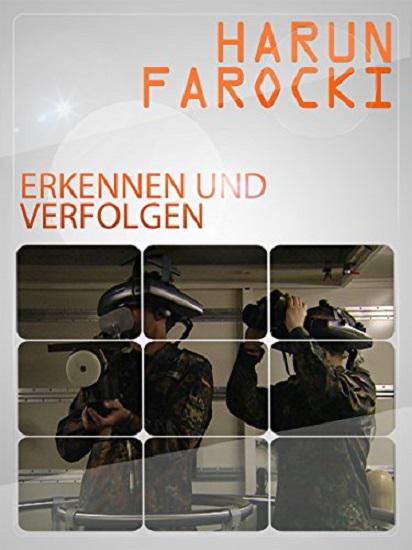|
ЭЈЙ§бЕСЗгАЦЌЁЂКЃЭхеНељЕФЕМЕЏОЕЭЗвдМАЗЩааКЭеНЖЗФЃФтЃЌзЗЫнСЫДгЖўеНЕНЯждкЕФЕМЕЏжЦЕМЯЕЭГЕФРњЪЗЁЃ

ЪЖБ№КЭзЗзй Erkennen und Verfolgen (2003) ЕМбн: Harun Farocki БрОч: ЙўТзЁЄЗЈТоЛљ РраЭ: МЭТМЦЌ жЦЦЌЙњМв/ЕиЧј: ЕТЙњ гябд: ЕТгя ЩЯгГШеЦк: 2003 ЦЌГЄ: Switzerland: 54 Зжжг гжУћ: War at a Distance IMDb: tt0377863 ЖЙАъ днЮо IMDB 6.5Зж 1991 ФъЃЌЕБКЃЭхеНељЕФЭМЯёГфГтЙњМЪУНЬхЪБЃЌМИКѕЮоЗЈЧјЗжецЪЕЭМЦЌКЭМЦЫуЛњЩњГЩЕФЭМЦЌЁЃетжжЗНЮЛЕФЩЅЪЇНЋгРдЖИФБфЮвУЧНтЖСЫљМћЫљЮХЕФЗНЪНЁЃЭМЯёВЛдйжЛЪЧзїЮЊМћжЄЃЌЖјЪЧзїЮЊЩњВњКЭЯњЛйЙ§ГЬжаВЛПЩЛђШБЕФЛЗНкЁЃетЪЧ Erkennen und Verfolgen ЕФжааФЧАЬсЃЌЫќМЬајНтЙЙЖдЪгОѕПЭЙладЕФжїеХЁЃ дкдЖОрРыеНељжаЃЌFarocki ЛиЙщЕНжюШчЪРНчЭМЯёКЭеНељУњЮФЕШзїЦЗжаЬНЫїЕФжїЬтЃЌЪЙЫќУЧдкММЪѕЩЯДІгкзюаТзДЬЌЁЃЙЄГЇЩњВњЕФздЖЏЛЏгыеНељжаЕФЦЦЛЕздЖЏЛЏВЂааЃЌЛњЦїЭМЯёЕФаТЪРНчБЛНвЪОСЫЁЊЁЊЭМЯёВЛЪЧЮЊШЫблЖјЩшМЦЕФЃЌЖјЪЧЮЊЪ§зжЪБДњЕФЪгОѕИњзйЯЕЭГЖјЩшМЦЕФЁЃИУЪгЦЕЪЙгУЛњЦїжЦЕМЯЕЭГЕФЪгОѕЙЄМўЁЂбЕСЗгАЦЌЁЂКЃЭхеНељЕФЕМЕЏОЕЭЗвдМАЗЩааКЭеНЖЗФЃФтЃЌзЗЫнСЫДгЖўеНЕНЯждкЕФЕМЕЏжЦЕМЯЕЭГЕФРњЪЗЁЃЖдЮДРДЕФРфПсПЩХТЕФвЛЦГЁЃЃЈЙШИшЗвыЃЉ In 1991, when images of the Gulf War flooded the international media, it was virtually impossible to distinguish between real pictures and those generated on computer. This loss of bearings was to change forever our way of deciphering what we see. The image is no longer used only as testimony, but also as an indispensable link in a process of production and destruction. This is the central premise of Erkennen und Verfolgen, which continues the deconstruction of claims to visual objectivity In War at a Distance, Farocki returns to themes explored in works such as Images of the World and the Inscription of War, bringing them technologically up to date. The automation of factory production is paralleled with the automation of destruction in warfare, and a new world of machine images is revealed ЈC images not intended for human eyes, but for the visual tracking systems of the digital age. The video traces the history of missile guidance systems from WWII through the present day using visual artifacts of machine guidance systems, as well as training films, missile footage from the Gulf War, and flight and battle simulations. A coolly terrifying glimpse of the future.
АйЖШЭјХЬЃК ЪЖБ№КЭзЗзй Erkennen und Verfolgen (2003).mp4 ЬсШЁТыЃКЛиИДПЩМћ
| 











